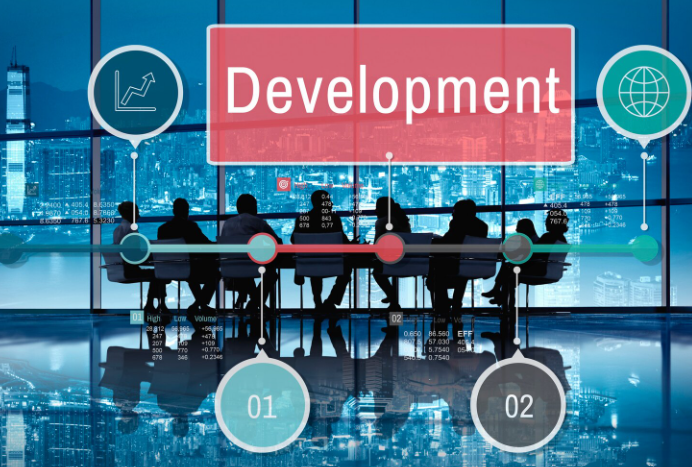In the fast-paced digital economy, startups and enterprises are under immense pressure to launch innovative products faster than ever before. One strategy that has stood the test of time—and is becoming even more critical in 2025—is Minimum Viable Product (MVP) development. However, the way MVPs are built and tested is evolving rapidly. Instead of focusing solely on technical feasibility or rapid deployment, the spotlight in 2025 is firmly on user-centric features that directly address customer pain points.
This article explores the evolution of MVP development, why user experience is now at the core, and how businesses can leverage this trend for sustainable success in 2025 and beyond.
What is an MVP in 2025?

Traditionally, an MVP is the simplest version of a product that allows businesses to validate assumptions, test functionality, and gather user feedback with minimal investment. While the concept remains the same in 2025, the expectations have changed:
- Users no longer tolerate poor experiences. Even early adopters expect seamless navigation, security, and performance.
- Technology has advanced. With low-code/no-code platforms, AI integrations, and faster cloud infrastructure, MVP development can be more feature-rich without extending timelines.
- Markets are crowded. To stand out, MVPs must prioritize features that directly address user pain points, rather than releasing generic solutions.
In 2025, the MVP development is not just a “test product.” It’s a strategic user-centric solution designed to build trust, attract early users, and create a foundation for scale.
The Shift Toward User-Centric Features
The biggest evolution in MVP development is the shift from functionality-first to user-first. Here’s how this is changing product strategies:
1. Problem-Solving Over Feature Dumping
Earlier MVPs often focused on including as many functions as possible to showcase “capabilities.” In 2025, successful MVPs are laser-focused on solving one or two key user problems exceptionally well.
For example, instead of creating a full-fledged e-commerce platform, startups are building MVP development that excel at frictionless checkout or AI-driven product recommendations—features users actually care about.
2. Personalization by Default
AI and machine learning are now easily integrated into MVPs. This enables personalization, even in early-stage products. A healthcare app MVP in 2025, for instance, doesn’t just log symptoms; it tailors recommendations based on user history, creating instant value for patients.
3. Seamless User Experience (UX)
In 2025, MVPs can no longer afford clunky onboarding or unintuitive interfaces. Businesses now invest in UX/UI design early in development, ensuring users have a smooth journey. Since retention depends on first impressions, clean design and intuitive navigation are no longer “nice-to-have” features—they’re essential.
4. Integration with Everyday Ecosystems
Today’s users expect MVPs to connect seamlessly with their existing digital lives. Whether it’s single sign-on (SSO), digital wallets, voice assistants, or IoT devices, MVPs in 2025 must integrate with the platforms and tools users already use.
5. Security and Trust as Core Features
Cybersecurity is no longer something to “add later.” With growing digital threats, even MVPs must include robust security, data privacy, and compliance measures. An MVP development that neglects this will struggle to build user trust and adoption.
Benefits of User-Centric MVP development in 2025
Focusing on user-driven features provides clear advantages:
- Faster Market Validation: By targeting specific user needs, businesses quickly know whether their solution resonates.
- Higher Retention Rates: Intuitive and problem-solving MVPs keep early users engaged.
- Stronger Investor Confidence: A user-centric MVP development demonstrates real traction, making it easier to secure funding.
- Reduced Wastage: Instead of building features that no one uses, companies allocate resources to what matters most.
Strategies for Building User-Centric MVPs in 2025
To succeed, startups and enterprises should adopt the following strategies:
1. Conduct Deep User Research
Understanding your audience is the foundation of MVP development success. Go beyond demographics and dive into:
- Behavioral patterns
- Pain points and frustrations
- Desired outcomes
In 2025, AI-powered analytics and social listening tools make this research more accurate and scalable.
2. Prioritize Features with Real Impact
Instead of cramming every idea into your MVP development, ask:
- Does this feature directly solve a user problem?
- Does it improve the user experience meaningfully?
- Will it help validate the core value proposition?
A prioritization framework like MoSCoW (Must-have, Should-have, Could-have, Won’t-have) can guide this process.
3. Leverage Low-Code and AI Tools
Low-code and AI-driven platforms allow faster prototyping without compromising quality. Startups can test concepts with polished user interfaces, giving the impression of a “finished product” while still being agile.
4. Test Early and Often
MVPs in 2025 thrive on continuous feedback loops. Incorporating tools for A/B testing, heatmaps, and real-time analytics ensures user behavior directly shapes product evolution.
5. Design for Scalability
While the MVP development should stay simple, its architecture must allow for scaling. Using cloud-native infrastructure and modular design ensures the MVP can grow without requiring complete rebuilding.
Real-World Example: MVPs in Action in 2025
Imagine a fintech startup in 2025 building an MVP for a personal finance app. Instead of launching with 20 features like budgeting, investments, credit score monitoring, and insurance, they focus only on AI-driven savings recommendations.
- The app connects to users’ bank accounts securely.
- It uses AI to analyze spending habits.
- It suggests micro-savings opportunities tailored to each user.
This user-centric approach solves a direct problem—helping people save more efficiently—and creates immediate value. With strong adoption, the startup can later expand into investments and credit management.
The Future of MVP Development Beyond 2025
Looking ahead, MVP development will continue to evolve with technological advancements. Some predictions include:
- Hyper-Personalized MVPs: Using AI and big data, every user could experience a slightly different MVP tailored to their needs.
- Voice-First MVPs: With the rise of conversational AI, MVPs may launch as voice-only experiences for faster adoption.
- Ethical Design as a Differentiator: Beyond features, users will care about inclusivity, accessibility, and ethical use of data.
Conclusion
The evolution of MVP development in 2025 highlights a major shift: from building fast to building user-first. Startups and enterprises that prioritize user-centric features will not only validate ideas faster but also gain loyal users, investor confidence, and a competitive edge.
In an era where users demand instant value, simplicity, and trust, the MVP is no longer just a minimal product—it’s a meaningful experience.
If your business is preparing to launch an MVP in 2025, remember this: success won’t come from how many features you build, but from how effectively you solve real user problems.

